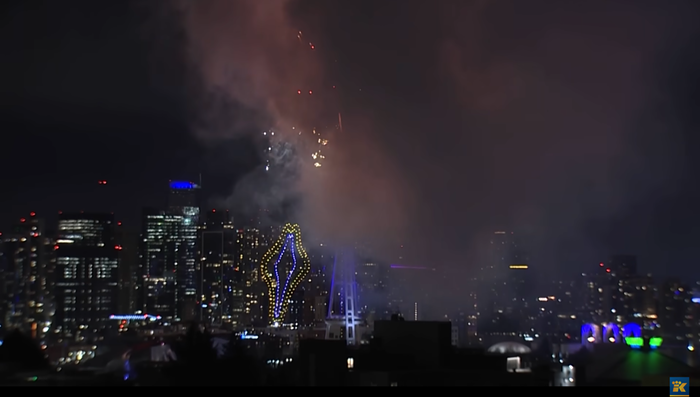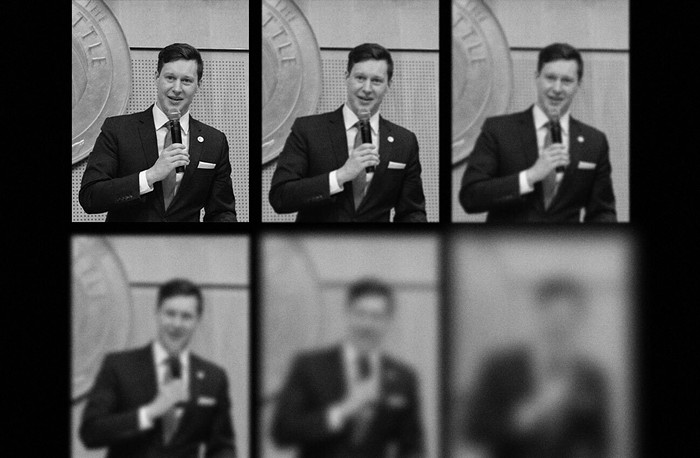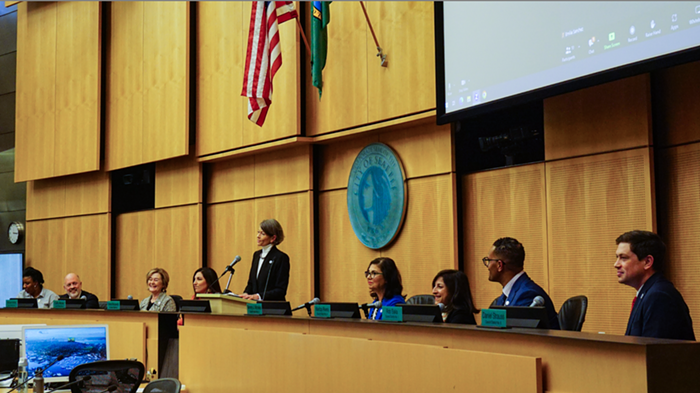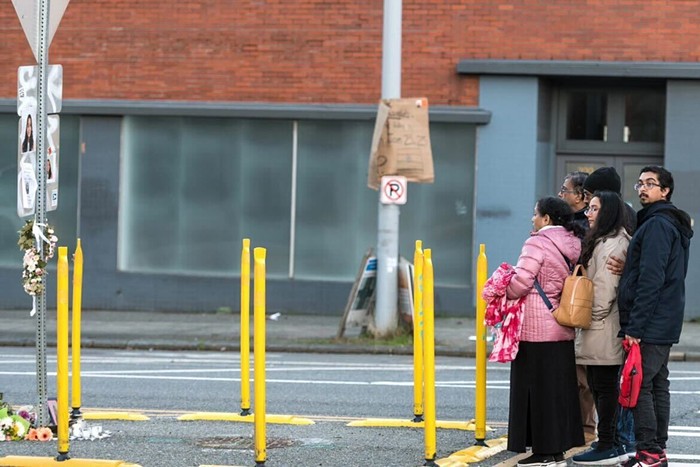
“You really shouldn’t have done that,” the youth pastor scolded me after several minutes of awkward silence. Coming from a mild-mannered Presbyterian minister, it may as well have been a temper tantrum worthy of an American Chopper meme.
I was a high school junior in Florida at the time, and my church youth group was visiting Atlanta for the weekend. We spent Saturday at the Six Flags theme park, and on Sunday we’d catch a Braves game at Fulton County Stadium. Before the ball game, though, we stopped for lunch at the Varsity, a locally revered drive-in near the Georgia Tech campus.
But I wasn’t interested in chilidogs at the Varsity. Atlanta was by far the largest city I had set foot inside at that time, and a big chunk of downtown Atlanta had been designed by John Portman, one of my favorite architects. Atlanta was also the first city I had visited that had a real subway system, and I was already well on my way to becoming an emotionally constipated transit geek at that age. (My ability to explain the differences between the IRT, BMT, and IND divisions of the New York City subway never fails to make me the life of the party.)
This was years before iPhones and Google Maps, but I somehow knew the North Avenue MARTA station was only a couple blocks down the street from the Varsity, and that John Portman’s Peachtree Center was only two stops south. I snuck away from the group and walked to the station, rode a fast train to Peachtree Center, and then rode a glass elevator to the top of the spectacular 52-story atrium in Portman’s Marriott Marquis hotel. My urge to explore Peachtree Center satiated, I returned to the Varsity to face a very anxious youth pastor. That short trip on MARTA was my first-ever ride on a subway.
I didn’t know it at the time, but Atlanta’s MARTA system was among the last of its kind: a modern, high-capacity rapid transit system in the United States.
An entire generation has now been raised under the assumption that such systems are far too costly and ambitious to build today. A recent Seattle Times story compared Seattle’s Link light rail system to Vancouver’s far superior SkyTrain system, but it’s also worth comparing our Link system to what we were able to build here in the US only a few short decades ago.
By the end of World War II, the mental picture of a subway in the United States was that of a dank, rickety system like in New York or Chicago. The automobile was seen as the way of the future; the Interstate Highway System was hatched, and streetcar systems around the country were systematically converted to diesel-powered bus routes.
But the problems with automobile dependency were already becoming apparent by the 1960s. And as more and more urban areas were destroyed by new freeway construction, “freeway revolts” quickly became a thing. Jane Jacobs famously led the fight to block the Lower Manhattan Expressway, which would’ve wiped SoHo and Greenwich Village off the map. Closer to home, a proposed crosstown freeway that would’ve plowed through the Washington Park Arboretum was successfully blocked by referendum in 1972.
The Urban Mass Transportation Act of 1964—signed into law by Lyndon Johnson as part of his Great Society agenda and followed by subsequent legislation in 1970 and 1974—tacitly recognized that freeways weren’t the answer for cities. The act spearheaded the construction of fast, modern rapid transit systems in several American cities, including MARTA in Atlanta, BART in the Bay Area, and most notably, the Washington, DC Metro system.
The 100-mile rapid transit system for the nation’s capitol was formally approved in 1968, when the population of the Washington, DC metropolitan area was about three million people, slightly less than Seattle’s metro area population today. A signature initiative of Lyndon Johnson’s Great Society, the Metro system was conceived as "a place where the city of man serves not only the needs of the body and the demands of commerce but the desire for beauty and the hunger for community," in Johnson’s words. Whereas the older subway stations of New York and Chicago have all the graciousness of detention facilities, the Metro system was designed to elevate the dignity of all who use it, from janitor to Senator.
Designed by Chicago-based Harry Weese Associates, the Metro system is monumental without being ostentatious; the concrete waffle-slab station vaults evoke the District’s neoclassical civic monuments without being derivative. (And in a great example of how good design doesn’t mean breaking the bank, Metro’s parabolic barrel vaults actually cost less to build than the flat-ceilinged stations in the original design proposals.) The Washington Metro system received the prestigious 25-Year Award from the American Institute of Architects in 2014.
Today, each eight-car, 600-foot train on the Metro system can comfortably carry about 1400 people. Combined with Vancouver-style full automation, trains arriving at a station once every 100 seconds could carry 50,400 people per hour each direction. (Multiply that number by 1.3 for crush load capacity, and that capacity could be further increased with innovations like open gangways between cars.) Each lane of a freeway, by comparison, can move only about 3600 people per hour, assuming a relatively generous 1.5 average occupants per vehicle. Electric vehicles might reduce emissions but they can’t change geometry; a subway or elevated system remains by far the most efficient way to move people from urban point A to urban point B.
Seattle, of course, had its chance to build its own Washington Metro-style rapid transit system during this era—a majority of the electorate even voted to do so—but the Forward Thrust initiative failed to reach an arbitrary 60% threshold for approval, and the federal money went to Atlanta instead. We’re now finally building out a regional light rail system, but the numbers tell us that we’re getting much less for our money.
Each four-car, 400-foot Link train can carry 776 people in comfort. Vancouver-style automation isn’t a possibility here thanks to shortsighted decisions to run Link trains on surface streets in various locations and temporarily share the downtown transit tunnel with buses. The best headways we can ever hope for are about ten trains per hour, which gives us a capacity of 7760 people per hour in each direction. (Again, multiply by 1.3 for crush loads.) Sound Transit’s East Link line is currently under construction at a cost of $264M per mile. Measured in 2018 dollars, the original, higher-capacity 100-mile subway system in Washington D.C. cost about $277M per mile to build.
And then there’s the question of speed. We measure our daily commutes in minutes, not miles. A 30-minute ride on Vancouver's SkyTrain’s Expo Line from the Granville station gets you as far as New Westminster, about 13 miles from downtown. Spend 30 minutes on Link and you might get seven miles, from Westlake to the Rainier Beach station, if you’re lucky enough to avoid a collision on MLK Boulevard along the way. This makes a world of difference when we’re looking for housing within a reasonable commuting distance. Even with similar skyrocketing housing prices, much more of the Vancouver area is within reasonable commuting distance of downtown Vancouver. We can't say the same about Seattle now, and probably never will.
In short, we’re spending roughly the same cost per mile to build a light rail system in Seattle as Washington D.C. spent on its Metro system in the 1970s—but our “rapid transit” system only carries 15% of Metro’s potential capacity, does so at much slower speeds, and costs more to operate. This isn’t to say we should allow the perfect to be the enemy of the good—I strongly support building out the full ST3 system as quickly as possible—but we could’ve had a far better system.
So, what happened? Since Washington D.C.'s Metro system was approved in 1968, the nation’s population has increased by 60 million people, our GDP has nearly quadrupled, and our productivity has doubled. A computer that used to fill a warehouse now fits in your pocket, and we’re seen great advances in construction and tunnel-boring technology. You would think something like the Washington Metro would be much easier and less costly to build today than in the age of Woodstock.
But you’d be wrong.
In the years since I escaped my youth group and took that formative MARTA trip to Peachtree Center, I’ve ridden nearly every major subway system in the United States and a few systems abroad, and at various times I’ve been a daily commuter on the Chicago ‘L’, Boston’s ‘T’, and the New York City subway. Over that same time period, I’ve watched our expectations for public transit in America devolve from the Great Society projects of BART, MARTA, and the Washington Metro in the 1970s, to surface-running light rail in the 1990s, to small streetcar projects in the 2000s. Next thing you know, we’ll be slapping a special paint scheme and the word “Rapid” onto buses to fool people into thinking they go faster. Oh, wait.
Transportation funding as a share of GDP has been on a steady decline since 1960, even as our population grows and construction costs skyrocket. What little funding remains has largely been redirected toward highways and airports. The Purple Line extension in Los Angeles is now topping out at $800M per mile. New York’s three-station Second Avenue Subway cost a staggering $2.6 billion per mile, and aside from a few small extensions, New York City hasn’t opened a single new subway line since 1940. We refuse to even maintain what we’ve built; the NYC subway and Washington Metro systems are crumbling due to deferred maintenance, along with our public schools and the rest of our social contract.
Alon Levy explains how subway construction in America has gotten so expensive compared to other countries, but he doesn’t really address the why. Levy is a smart guy with a strong mathematics background, but maybe he should’ve spent more time over in the humanities department. The fundamental reasons for our decline aren’t technical or mathematical, but cultural: As a nation, we didn’t even wait for the ink to dry on the Civil Rights Act before we simply stopped giving a shit about the public good as a concept.
Ten years after the the youthful optimism of JFK and the Great Society, Middle America barricaded itself in the suburbs and swallowed Nixon’s Southern Strategy. Then came fictional “welfare queens” and the Reagan Revolution. Nearly every metric of quality of life in America began its downward slide around the time Reagan took office, and investment in public transit was no exception.
Wealthy homeowners had already blocked BART’s expansion to Marin County in the 1960s, and in the suburbs of Atlanta, the MARTA acronym became an unprintable racist punch line. The Washington Metro master plan wasn’t fully built out until 2001. Even when we’ve managed to build high-quality transit, many stations remain surrounded by acres of parking and low-rise sprawl. Up in Vancouver, vertical neighborhoods of high-rise apartments surround many SkyTrain stations. And in America? We continue to prove that even the best-designed transit systems can't make up for terrible land use decisions.
Meanwhile, billionaires and mega-corporations have seen their taxes slashed, while what remains of public revenue gets shoveled into the military. The Pentagon spends as much money each month as Sound Transit’s ST3 plan proposes to spend over 25 years. Other countries have continued to expand and improve their transit systems over the past 40 years, but we’ve had to settle for ever-diminishing expectations. Your slow, crowded Link train got delayed again because it hit a car in the Rainier Valley? Sorry, but that’s the best transit we can afford these days. Now shut up and put on your MAGA hat like a good American.
During the post-war era, our national thought leaders have managed to convince a sizeable portion of the population that urban density and robust public transit systems are some kind of United Nation “Agenda 21” conspiracy. The idea that our representative (in theory) government should provide for the common good, be it in transit or education or healthcare, used to be mainstream but has been systematically turned into a fringe belief somewhere out there in Karl Marx’s territory. Civic optimism has been replaced by false nostalgia and permanent austerity. If architect Harry Weese were to present his design for the Washington Metro system to the Sound Transit board today, they’d swallow their snuff in shock.
As Charles Mudede recently pointed out, this wasn’t natural evolution at work, but deliberate social engineering at the behest of automotive and fossil fuel industries. Seven of the world’s ten largest companies in terms of revenue are automotive or fossil fuel companies, and car-related advertising dominates the nightly newscasts and print newspapers of every American city. If you think all that ad revenue doesn’t slant their news coverage about transit, I have a bridge to sell you.
Governments at every level, from your local zoning commission to the White House, have made automobile dependency the de facto way of life in America, and our political leaders are rewarded handsomely for it. Even if the costs to build effective transit were as low as they are in Europe, the deeply-entrenched political resistance to it would remain. The suburban ideal of the single-family house with a Mustang in the garage inspires Jonestown levels of religious fervor, with cheap gasoline standing in for the Kool-Aid.
It’s a tragic irony that the postwar electorate who gave us JFK and the Moon Landing will be most remembered for giving us Donald Trump and a planetary climate crisis. It will be the life work of their children and grandchildren to reverse the damage and bend the moral arc of the universe back toward justice—and toward more ambitious rapid transit plans.
Sources:
Characteristics of Urban Transportation Systems (Revised Edition), United States Department of Transportation, September 1992.
7000 Series Railcar Technical Specification, Washington Metropolitan Area Transit Authority, January 30, 2009.
David Cole, AIA is an architect in Seattle.


















